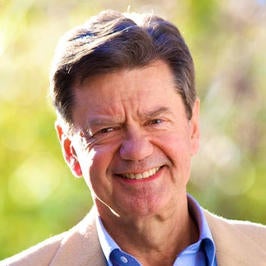
In Memoriam
Robert Cort Haddon
UCR distinguished professor of Chemistry and of Chemical and Environmental Engineering
Robert Cort Haddon, UCR distinguished professor of Chemistry and of Chemical and Environmental Engineering, and Director of the Center for Nanoscale Science & Engineering, passed away April 21, 2016.
Haddon is best known for the prediction and discovery of superconductivity in alkali-metal-doped carbon-60, for his preparation and characterization of a stable crystal of phenalenyl radicals, and for his pioneering research in nanotechnology. He was an elected member of several scholarly societies, and, in 2014 was named by Thomson Reuters as one of the “best and brightest minds of our times.”
Nanotechnology is “the final frontier in miniaturization, at least on the surface of the planet,” Haddon once said. “It encompasses all of the scientific disciplines including chemistry, engineering, physics, biology, computers and medicine,” Haddon added.
“Thus, nanotechnology serves as a vehicle to create teams of scientists and engineers around a particular problem rather than focusing on what can be accomplished within a particular discipline. This comes about because the focus in nanotechnology is on the basic building blocks of matter – atoms and molecules – and at that level all of the disciplines have a common starting point.
“Though I was trained as a chemist, early in my career with AT&T (Lucent) Bell Laboratories I was applying my knowledge to materials research as a Distinguished Member of the Technical Staff in the Materials Chemistry Research Department. My interest in advanced carbon materials led to the preparation of the first soluble single-walled carbon nanotubes, allowing the study of carbon metals and semiconductors in solutions. That led to my founding two companies that manufactured carbon nanotubes for advanced applications. I continue to be interested in the electronic structure and properties of molecules and materials and the discovery of new classes of electronic materials.”
Some of Haddon’s honors and distinctions included:
- Over 700 scientific publications, with over 50,000 citations, and an H-Index of 113 [ the H-Index is a widely used measure of scholarly productivity and citations]
- James C. McGroddy Prize for New Materials, American Physical Society (2008)
- Fellow, Royal Australian Chemical Institute (1998)
- Fellow, American Physical Society (1996)
- Fellow, American Association for the Advancement of Science (1993)
- Person of the Year, Superconductor Week (1991)
- Queen Elizabeth II Fellow (1973-75)
- Highly Cited author in chemistry, physics and materials science (ISI)
Haddon grew up in Longford, Tasmania, an island state of Australia. He obtained a Bachelor’s degree in chemistry at Melbourne University in 1966, and a PhD degree in organic chemistry from the Pennsylvania State University in 1971.
He was a Postdoctoral Fellow at the University of Texas during the period 1972-3, after which he took up a Queen Elizabeth II Fellowship at the Australian National University. In 1976 he joined Bell Telephone Laboratories; during the period 1978 to 1990 he was a member of the Chemical Physics Research Department, before assuming a position in the Materials Chemistry Research Department at AT&T (Lucent Technologies) Bell Laboratories as a Distinguished Member of Technical Staff.
In 1997 he was appointed Professor of Chemistry and Physics at the University of Kentucky, and in 1998 he became Director of the Advanced Carbon Materials Center (NSF Materials Research Science and Engineering Center).
In 1998 he co-founded CarboLex, Inc, a company that produces and sells single-walled carbon nanotubes. In 1999, he founded Carbon Solutions, Inc, a company that is focused on the chemical processing and dissolution of carbon materials for advanced applications.
In 2000, he was appointed Distinguished Professor in the Departments of Chemistry and Chemical & Environmental Engineering and Director of the Center for Nanoscale Science and Engineering (CNSE) at the University of California at Riverside (UCR); in 2002, the scope of CNSE was expanded to include the Center for Nanoscale Innovation for Defense which was formed as a multi-campus initiative between UCR, UCSB and UCLA. Under Haddon’s leadership UCR’s CNSE Nanofabrication Facility was established.
Haddon is survived by his wife and two children.
A scientific symposium honoring Professor Haddon will be announced in the near future.
Memorial service will be held at 10 a.m. Thursday, April 28 at Acheson & Graham Garden of Prayer Mortuary, 7944 Magnolia Avenue, Riverside, CA
In lieu of flowers, the family requests that gifts be made to The Robert C. Haddon Memorial Scholarship at UCR. Checks made payable to the UC Riverside Foundation can be sent to the UC Riverside Foundation at PO Box 5068, Riverside, CA 92517-5068. Please include “Haddon Scholarship” on the check memo line.
